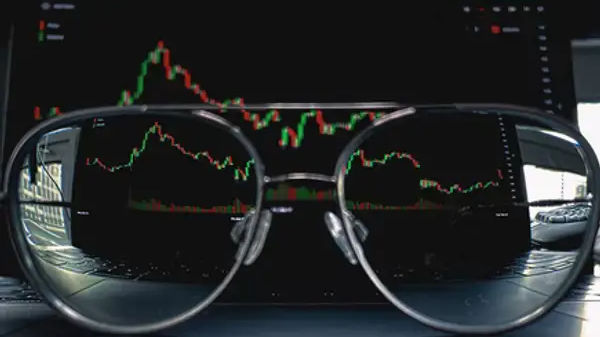The domestic stock benchmarks finished the week firmly up. Positive global indications, as well as a reversal in foreign fund selling in India, improved sentiment.
Also Read| Japan’s inflation remains above central bank’s 2% target
The major indices gained ground in each of the week’s five trading sessions. The Nifty closed over 16,700 points. The Sensex gained 2311.45 points, or 4.3%, in the week ending Friday, 22 July 2022, to conclude at 56,072.23.
Also Read| Rupee hits all-time low of 80; why is it falling?
The Nifty 50 index rose 670.25 points, or 4.18%, to 16,719.45. The BSE Mid-Cap index increased 3.53% to 23,660.37. The BSE Small-Cap index rose 3.86% to 26,773.41.
Also Read| China extends loans for developers to end mortgage boycott
How equity benchmarks performed on a weekly basis:
Monday, July 18, 2022
The frontline indices finished around the day’s high with strong gains, mirroring favourable global indications. The S&P BSE Sensex rose 760.37 points, or 1.41%, to 54,521.15. The Nifty 50 index rose 229.30 points, or 1.43%, to 16,278.50.
Also Read| Here’s what depreciating rupee means for stock markets
Tuesday, July 19, 2022
The benchmark equity indices finished with modest increases. The S&P BSE Sensex increased 246.47 points, or 0.45%, to 54,767.62. The Nifty 50 index increased by 62.05 points, or 0.38%, to 16,340.55.
Also Read| What is Wholesale Price Index (WPI)?
Wednesday, July 20, 2022
The major equity indices finished with robust gains on the back of positive global signals. The S&P BSE Sensex increased 629.91 points, or 1.15%, to 55,397.53. The Nifty 50 index rose 180.30 points, or 1.10%, to 16,520.85.
Also Read| What is Consumer Price Index (CPI)?
Thursday, July 21, 2022
The major benchmark indices finished with modest increases. The Sensex rose 284.42 points, or 0.51%, to 55,681.95. The Nifty 50 index increased by 84.40 points, or 0.51%, to 16,605.25.
Also Read| What is the difference between WPI and CPI?
Friday, July 22, 2022
The domestic equities benchmarks finished near the day’s high. Positive global indications and a reversal in foreign fund selling in the Indian market bolstered the sentiment. The benchmark index, the S&P BSE Sensex, rose 390.28 points, or 0.70%, to 56,072.23. The Nifty 50 index increased by 114.20 points, or 0.69%, to 16,719.45.
Also Read| What is Insolvency and Bankruptcy Code 2016?
What happened in the Global markets:
India
Following a drop in international rates, the Central Government reduced the windfall tax on petrol, diesel, jet fuel, and crude oil on July 20, 2022. The government has lowered the windfall tax on diesel and aviation turbine fuel (ATF) by Rs 2 per litre and eliminated the Rs 6 levy on petrol exports. The tax on ATF has been reduced from Rs 6 to Rs 4 per litre, while the tax on diesel has been reduced from Rs 13 to Rs 11. Furthermore, the Rs 23,250 per tonne additional tax on locally produced crude oil has been reduced to Rs 17,000 per tonne.
Also Read| What is Insolvency and Bankruptcy Code (Amendment) Bill 2021?
China
China’s one-year and five-year loan prime rates remained constant at 3.7% and 4.45%, respectively. The Asian Development Bank has reduced China’s growth projection owing to worries over the country’s zero-Covid policy and rigorous lockdowns, which have also harmed the country’s struggling property market. The world’s second-largest economy’s GDP growth rate is predicted to be 4% in 2022, down from 5% before, according to an ADB analysis released on Thursday.
Also Read| Explained: Why has RBI allowed international trade settlement in Rupee
Japan
According to official statistics issued on Friday, prices in Japan jumped 2.2% in June compared to the previous year. It follows 2.1% increases in May and April.
Also Read| How the US Federal Reserve’s rate hike impacts RBI policy: Explained
United Kingdom
Inflation in the United Kingdom reached a new 40-year high in June, as food and energy costs continued to rise, exacerbating the country’s historic cost-of-living issue. According to figures released on Wednesday, consumer price inflation reached an annual rate of 9.4% in June, up from 9.1% in May.
Also Read| Explained: Changes in repo rates and their impact on stock market
Europe
The European Central Bank raised interest rates by 50 basis points on Thursday, the first increase in 11 years, as concerns about rampant inflation trumped concerns about slowing growth. In July, Eurozone business activity unexpectedly fell. The composite PMI, which includes both manufacturing and services, came in at 49.4, just below the 50-point threshold that divides activity growth from contraction.







